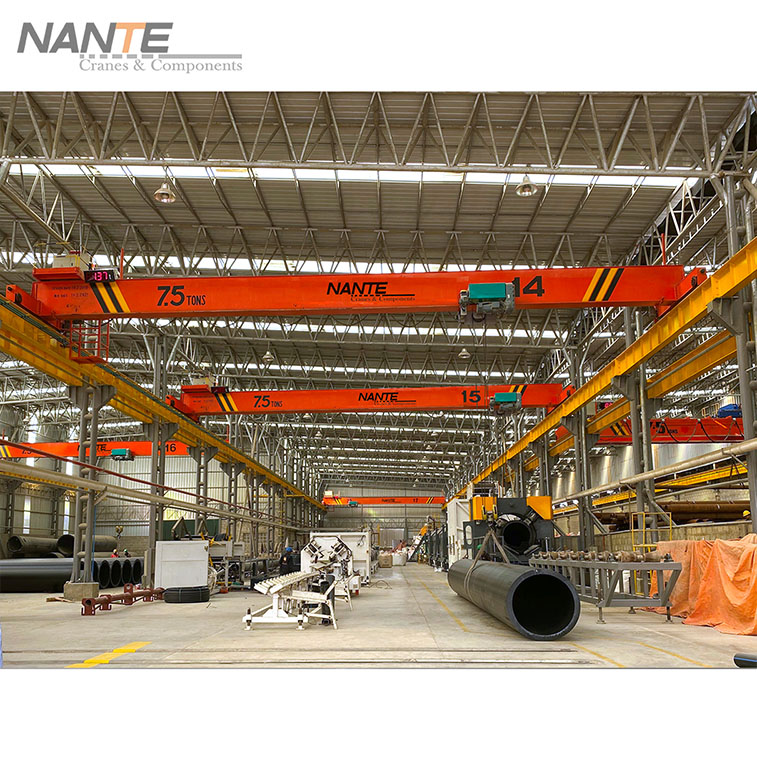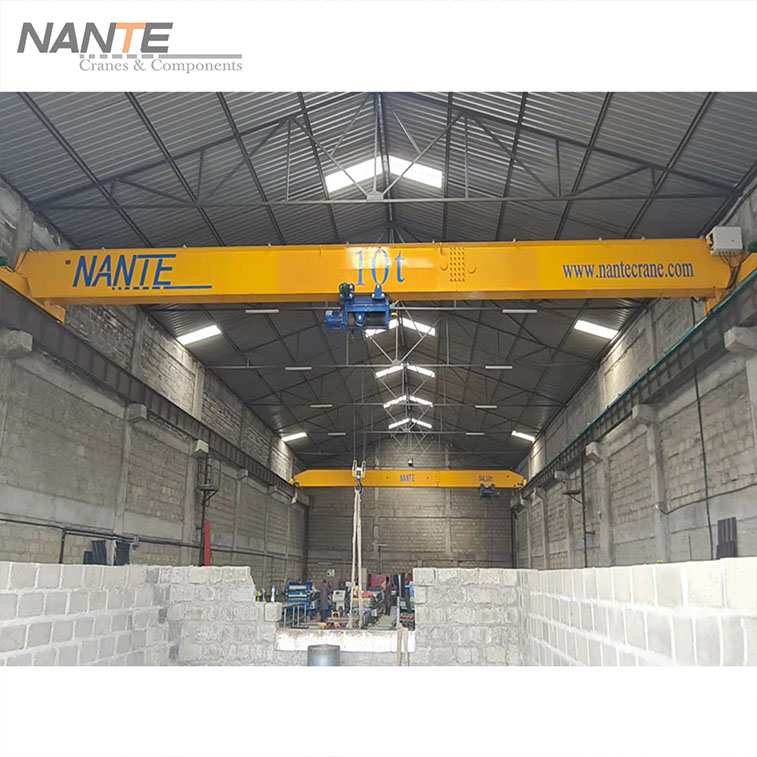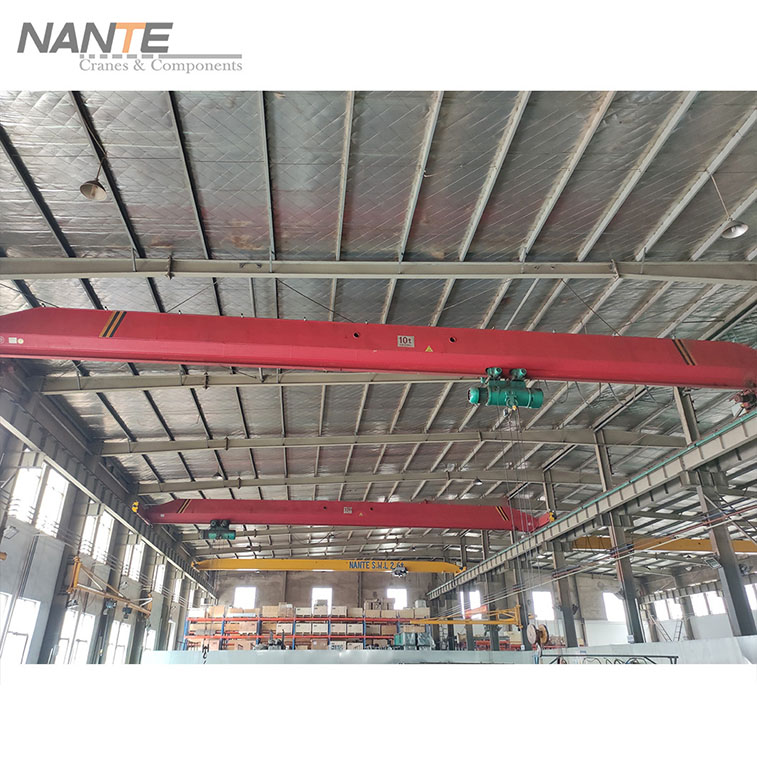Where Are Overhead Cranes Used?
Date: 2024-02-16 Share:
Overhead cranes are used in a wide range of industries to move and position heavy loads. These cranes are usually mounted above the workspace and can traverse along a track system to reach different areas. Here are some of the industries where overhead cranes are commonly used:

Manufacturing:
In the manufacturing industry, overhead cranes are used for material handling on assembly lines, including raw materials, components and finished goods, goods management in warehouses, and in various parts of the production process. They move raw materials, components or finished goods from one place to another, ensuring the smooth running of the production line.
The manufacturing industry typically handles large quantities of materials and components, and overhead cranes provide an efficient and safe way to move these heavy loads, avoiding the risks and fatigue of manual handling. These cranes can be used on assembly lines, in warehouses and other production areas, increasing efficiency, reducing labour costs, cutting down on workplace accidents and allowing operators to position materials more accurately.
Construction:
Overhead cranes are often needed on construction sites to lift and position heavy building components such as steel beams, prefabricated wall panels, roofing materials, and other heavy materials. Cranes may be mounted on permanent structures or temporary towers to support construction activities.
Because construction components are often very heavy and require precise placement, overhead cranes provide the necessary height and reach, as well as precise manoeuvrability, to meet these needs.
Overhead cranes increase the efficiency of the construction process, ensure construction safety, and are able to move quickly between different work areas.
Logistics and Warehousing:
In ports, warehouses and logistics centres, overhead cranes are used for the storage and retrieval of goods and the handling of containers, pallets and other items. Such cranes can be used for efficient loading and unloading of ships, trains and trucks, as well as for organising and retrieving items from the facility.
As the logistics and warehousing industry needs to handle large quantities of goods quickly and accurately, overhead cranes provide an efficient way to manage the storage and movement of goods, which reduces the time and errors associated with manual handling.
Overhead cranes increase storage capacity and operational efficiency in warehouses, reduce labour requirements and help automate management.

Automotive Industry:
In automobile manufacturing plants, overhead cranes are used for material handling on assembly lines including engines, body parts, tyres, etc. These cranes are mostly used in paint shops, welding booths and other areas where precise lifting is required.
As the automotive manufacturing process involves the assembly and handling of a large number of parts and components, overhead cranes are able to provide the required precision and height, and can therefore be adapted to the needs of different processes. This improves the efficiency and quality of automotive production, reduces the labour intensity of worker handling and helps automate the production line.
Steel Industry:
In steel mills, overhead cranes are used for handling and stacking heavy steel plates, ingots and other raw materials.
The steel industry involves the handling of large quantities of heavy materials and overhead cranes are able to handle these materials, reducing the risk of manual handling and providing the required coverage. Such cranes improve safety and efficiency in steel production, reduce material handling costs and optimise production processes.
Mining Industry:
In mines, overhead cranes excavate and transport ore, rock and other materials from underground to the surface, and can also be used to move equipment and supplies within the mine.
As the mining process requires the handling of large quantities of ore and rock, and overhead cranes can provide the required lifting capacity and height, so the materials can be lifted from underground to the surface for processing. This increases the efficiency of mining operations, reduces safety risks in underground workplaces and automates material handling.
Power Industry:
Overhead cranes are used for handling coal, fuel and other heavy equipment in power plants, especially those that use coal or other bulk materials as fuel.
As the operation of a power plant requires a large amount of fuel and equipment, overhead cranes can provide efficient material handling solutions to ensure the stable operation of the power plant. They improve the operational efficiency of power plants, reduce material handling costs and optimise fuel storage and consumption.
Waste Disposal:
In waste treatment facilities and landfills, overhead cranes can be used to load and unload waste containers as well as sort and distribute waste.
Waste Waste disposal involves the handling and sorting of large quantities of waste. Overhead cranes handle this waste efficiently and promote recycling and reuse. This improves the efficiency and quality of waste disposal, reduces the labour intensity of manual handling and contributes to environmental sustainability.
Maintenance and repair:
In facilities that require regular maintenance and repair, overhead cranes can be used to lift heavy equipment and machinery for inspection, repair or replacement.
Maintenance and repair work usually involves the movement and positioning of heavy equipment, and overhead cranes can handle such equipment safely and efficiently, ensuring that maintenance and repair work is carried out smoothly. This improves the efficiency and quality of maintenance and repair work, reduces safety risks in the workplace and reduces labour requirements.

In summary, overhead cranes have a wide range of applications in different industries, where they provide efficient, safe and precise material handling solutions that increase efficiency, reduce costs and contribute to production automation and environmental sustainability. It is important to note that the use of overhead cranes requires proper training and certification to ensure the safety of the operator and others working in the area.
 English
English






